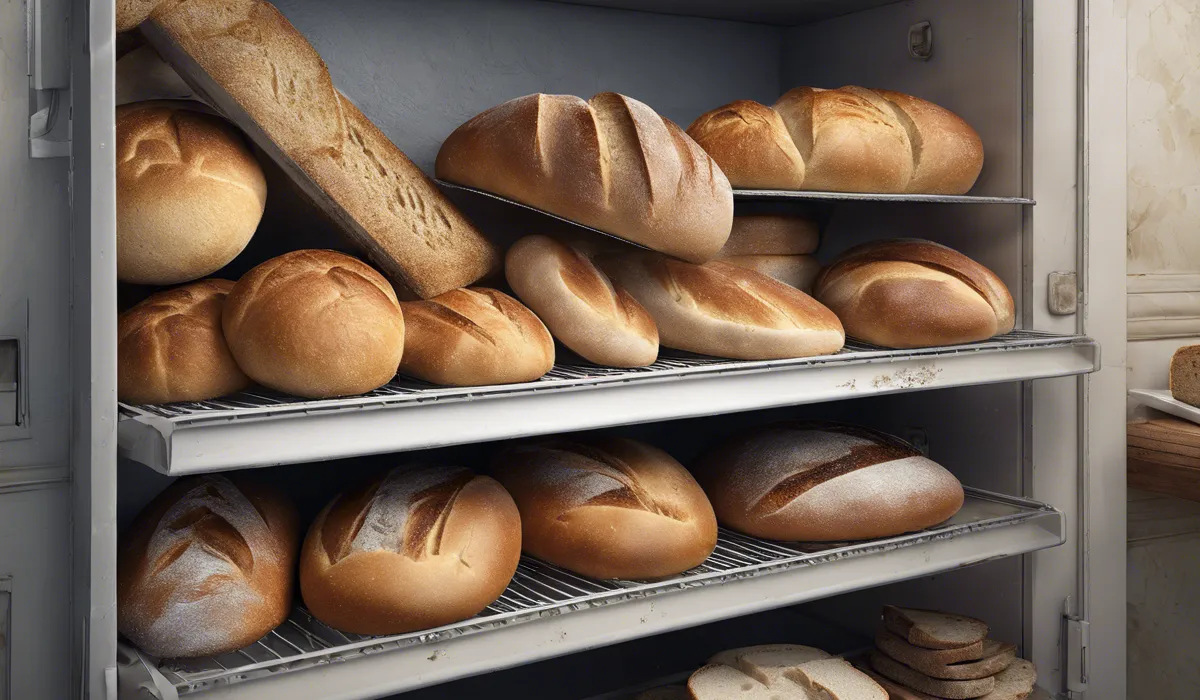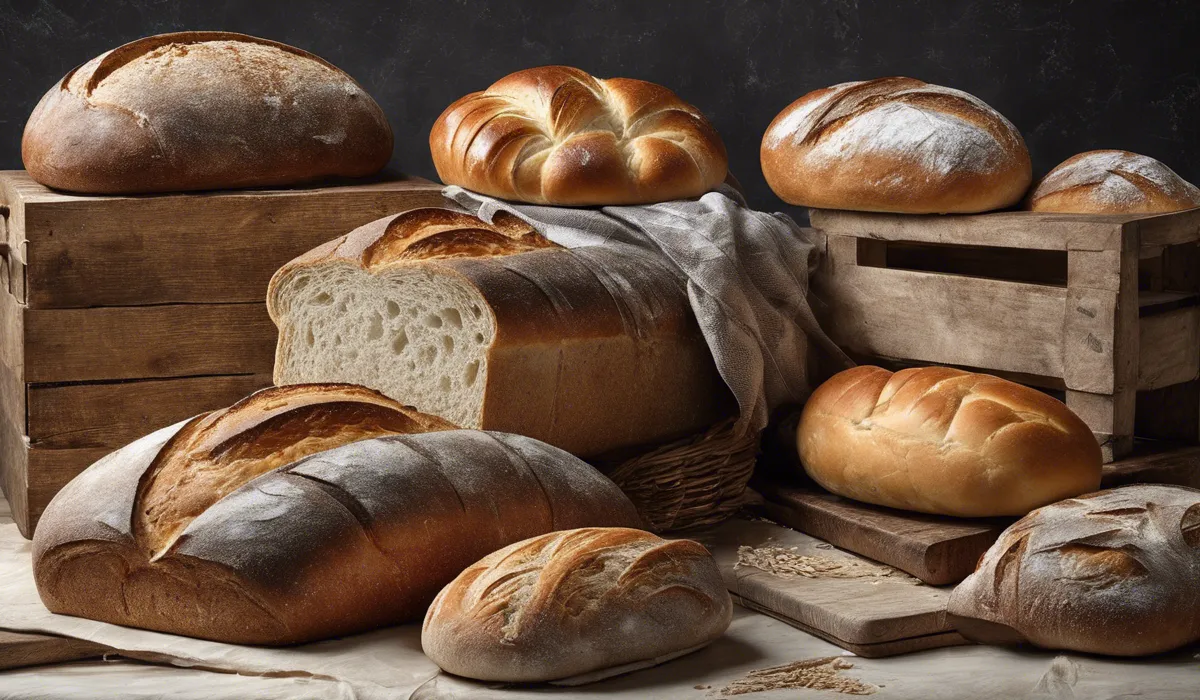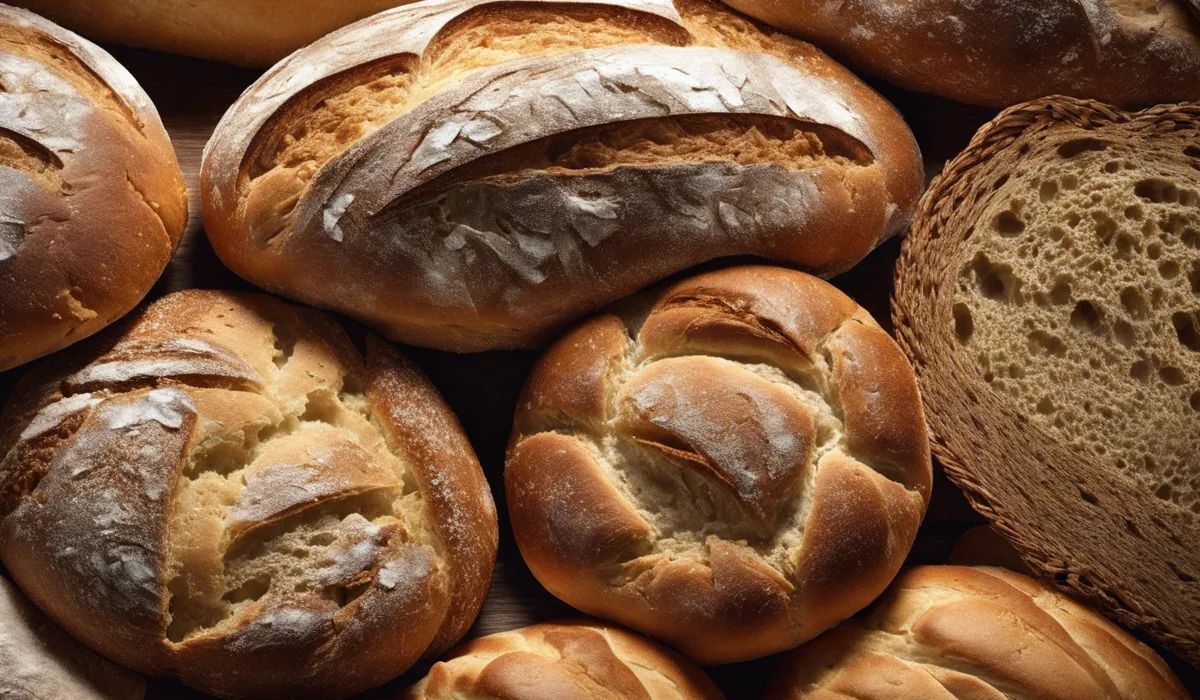To store bread and prevent mold, keep it in a cool, dry place and use a breadbox or paper bag for breathability. Avoid plastic bags that trap moisture. For longer storage, freeze it in airtight bags.
Proper Storage Environment

Temperature and Humidity Considerations
To keep bread fresh and mold-free, the temperature and humidity levels where you store your bread are crucial. Bread thrives in a cool and dry environment.
High humidity and temperatures can accelerate mold growth and spoilage. Ideally, bread should be kept in a place with a temperature around 68 degrees Fahrenheit (20 degrees Celsius) and low humidity.
It is wise to avoid storing bread above appliances that generate heat, as this can create pockets of warm air that are not ideal for bread preservation.
Best Locations for Storing Bread in the Kitchen
Choosing the right spot in the kitchen can make a difference in how long your bread stays fresh.
The best places are cool, dry cabinets or pantries away from the oven or dishwasher. You can also consider a spot on your kitchen counter if it’s away from direct sunlight and heat sources.
Remember, bread needs a stable environment, so frequent changes in temperature and humidity should be avoided.
The Impact of Air Circulation on Bread Longevity
Air circulation plays a significant role in preventing mold. Good airflow helps to keep moisture levels down, discouraging mold growth.
However, too much air can dry out your bread, leading to staleness. Therefore, the key is to find a balance by storing bread in a location where there is some air movement but not excessive airflow.
A breadbox with small ventilation holes can provide the perfect environment for this.
Bread Storage Methods

Breadbox Usage and Its Benefits
Using a breadbox is an age-old method that continues to be effective for storing bread.
Breadboxes create an enclosed environment that maintains the right humidity level to keep bread fresh while allowing enough air exchange to prevent mold.
They come in various materials like wood, metal, or ceramic, each with its benefits, such as wood being good at absorbing excess moisture.
Storing Bread in the Refrigerator: Pros and Cons
Storing bread in the refrigerator can slow down mold growth due to the cool temperature.
However, it can also cause bread to go stale faster because of retrogradation, where the starch molecules crystallize.
If you choose to refrigerate your bread, consume it quickly and consider toasting it to regain some freshness. For those who prefer soft bread, refrigeration might not be the best option.
Freezing Bread for Long-Term Storage
For long-term storage, freezing bread is an excellent option. When properly wrapped in airtight containers or freezer bags, bread can maintain its quality for several months.
It is essential to slice the bread before freezing so you can thaw only what you need. Thawing can be done at room temperature or by using a microwave or toaster, providing a convenient way to enjoy fresh bread anytime.
The Role of Airtight Containers and Plastic Bags
Airtight containers and plastic bags can be useful for keeping bread fresh. They protect bread from air and contaminants and help maintain moisture levels.
However, if there is any existing moisture or the bread is not cooled before being placed in these containers, they can create an environment that promotes mold growth.
It’s important to ensure bread is completely cool and dry before using these storage methods.
Maintenance and Handling Practices

Keeping Bread Dry and Free from Contaminants
Keeping bread dry is vital for preventing mold. Make sure your hands are clean and dry when handling bread, and avoid placing bread on wet surfaces.
Also, protect bread from contaminants by keeping it away from raw foods and cleaning any crumbs or spills in the storage area promptly.
How to Check for the First Signs of Mold?
Regularly inspect your bread for any signs of mold, which can appear as fuzzy spots in various colors like white, green, or black.
Checking bread before each use can help you catch mold early, preventing it from spreading. Pay special attention to the corners and bottom of the loaf, where moisture can accumulate.
Best Practices for Handling and Slicing Bread to Minimize Exposure
To minimize exposure to air and contaminants, handle bread as little as possible and only with clean utensils.
When slicing bread, use a clean, dry knife, and only cut what you will use immediately. Keeping the rest of the loaf intact helps maintain its freshness and protect it from mold.
When to Discard Bread to Prevent Health Risks?
It is crucial to discard bread at the first sign of mold to prevent health risks. Mold can produce mycotoxins, which can be harmful if consumed.
Do not try to salvage parts of the bread that appear unaffected by mold, as the spores can spread invisibly. When in doubt, it is safer to throw the bread away.
FAQs About Storing Bread to Prevent Mold
What is the best way to store bread to prevent mold?
Store bread in a cool, dry place inside a breadbox or wrapped in a paper bag to allow breathability and prevent mold.
Can I store bread in a plastic bag to keep it fresh?
No, avoid storing bread in plastic bags as they trap moisture and can accelerate mold growth.
How can I store bread for a longer period without getting mold?
For long-term storage, freeze bread in airtight bags to prevent mold and maintain freshness.
Is refrigerating bread a good option to prevent mold?
Refrigerating bread is not recommended as it can dry out the bread quickly, although it may slow down mold growth.
Does slicing bread affect how it should be stored to prevent mold?
Sliced bread can dry out or mold faster than unsliced, so it should be consumed more quickly or stored in the freezer if you want to keep it longer.
Final Thoughts
To mitigate mold growth and extend the shelf life of bread, opt for a cool, dry storage area.
Utilize a breadbox or paper bag to promote air circulation, steering clear of plastic bags that can retain moisture. For prolonged preservation, bread should be frozen in airtight bags.
